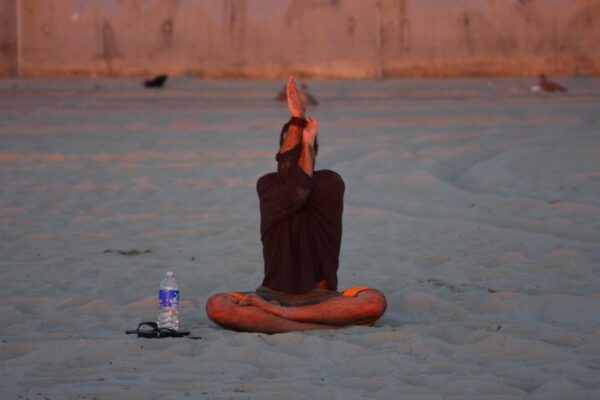This article originally appeared in Tricycle.
“I was stressed out, burned out, and divorced. And then I started doing yoga.”
This is how many people I have spoken to in the course of my research describe their path to mindfulness. Like yoga, mindfulness has had a tremendous impact on the lives of individuals who are searching for mooring in the midst of life’s day-to-day struggles.
Yoga and mindfulness—in their modern adaptations of their South Asian religious roots—have both been widely criticized for their deviation from their presumably more authentic “traditional” forms. A frequent charge leveled at both modern yoga and mindfulness is that their reshaping as world-affirming forms of spirituality is individualistic and therapeutic—an ego-based process of “self-care” that subverts the original goal of realizing the illusory nature of the self. These arguments may offer critical insights into how yogic and meditative traditions have been adapted to the needs of the neoliberal marketplace. Yet they also perpetuate a mythology of an authentic, “truer” premodern tradition, and indeed implicitly presume a static view of cultural tradition, one that inadequately accounts for the diversity and mutability of premodern spiritual forms, as the British historian of yoga Mark Singleton has pointed out.
I find the dismissal of mindfulness as inauthentic ironic; it is similar to the complaints made by some American Buddhists about their Asian Buddhist counterparts—namely, that the preoccupation of Asian Buddhist monks and laypeople with the mundane aims of merit-making and rebirth are aberrations of what American practitioners perceive as a “purer” and “more rational” contemplative philosophy. Both make claims about what “real” Buddhism is without giving serious consideration to the enormous innovation and pluralism that have characterized its historical development.
Indeed, as the American anthropologist James Clifford says, cultures “do not hold still for their portraits.” The same applies to religion. Traditions are always in flux, and they are subject to influences from sources both proximate and foreign. The tradition that has come to be known as Buddhism today in Asia has always been reconfigured and re-defined by sociocultural conditions, political circumstance, and transcultural encounters. The contemporary American Buddhist interest in mindfulness is no different. Focusing too narrowly on the inauthenticity of mindfulness because of its departure from a presumed pure original form gives insufficient attention to the themes and concerns central to the lives of dedicated American Buddhist practitioners.
When Westerners cite, translate, appropriate, or make claims to mindfulness (and many other Buddhist concepts), they are drawing on ideas that they understand to be rooted in Buddhism as a common sense response to the ethical question of how one ought to operate and relate to others in the messy context of everyday life. From such a standpoint, we might see their penchant for “curated” mindfulness practices not as a fragmentation of Buddhism but as a historically and socially appropriate revitalization of it. Moreover, Asian Buddhists and American Buddhists alike can be regarded as engaging in understandings of Buddhism that address their this-worldly needs, whether in the immediate “here and now” or in future rebirths.
Take, for example, Sara, a 35-year-old nonprofit worker from Los Angeles whom I got to know through Against the Stream, a Buddhist meditation center in Hollywood. When we met, Sara had been attending the group for nearly ten years. Sara had struggled with addiction throughout her twenties. Although she attended other recovery programs like AA and NA a number of times, she found that traditional treatment programs required her to surrender her trust in herself to trust in the group and the program. Against the Stream had a different approach to addiction, one that—as she put it— “resonated” with her more and ultimately helped her to “be a better person.” In particular, she found that the Buddhist-based mindfulness approach she learned from her teachers emphasized the validity in each person’s experience, the ability to tune in to one’s own suffering and explore with curiosity what underlies this suffering; and they taught that the path to freedom was held within the self. As Sara put it, this meant “honoring who I am and letting that sort of develop and grow—in the way it needs to.”
This perspective is one that observers of American mindfulness and yoga might adopt as well. Yet we should not exempt these movements from scrutiny. Rather, we can approach them with an investigative mind as well as with open curiosity. We can shine a light on the various innovative—and contested—attempts of mindfulness and yoga practitioners to bring their practices “off the cushion” into their everyday lives as a source of healing and cultivation of self.
Watch “Against the Stream:Taking refuge in an American Sangha”
Click here to read this article on Tricycle (password required).
Photo credit: Nathan Rupert /Flickr
Nalika Gajaweera was a senior research analyst with the USC Center for Religion and Civic Culture through 2023.








